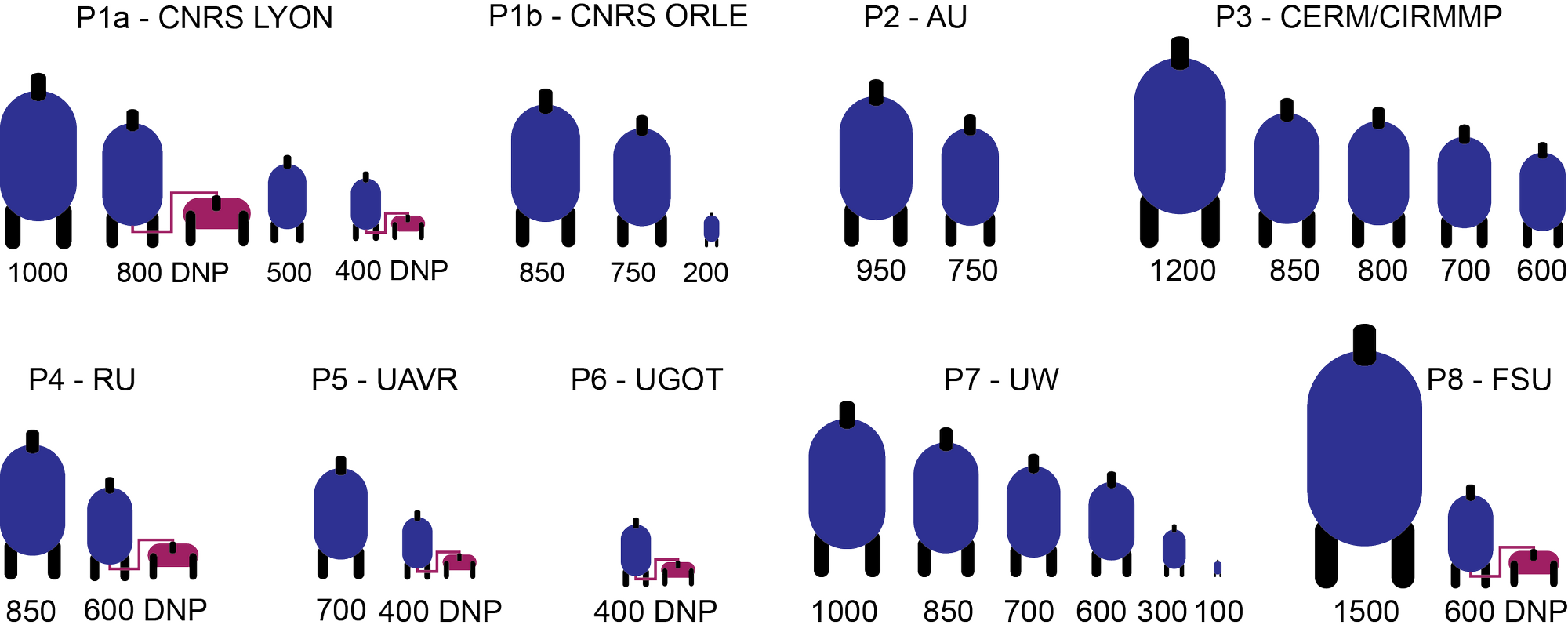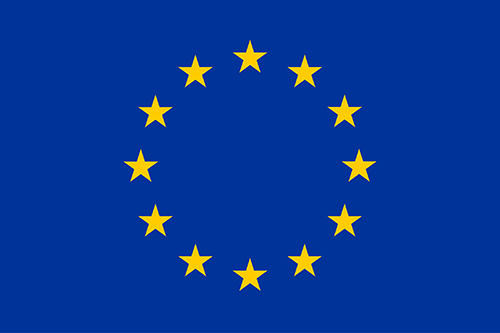The PANACEA project is providing measurement time on a set of unique solid-state NMR instruments to European researchers from both academia and industry.
Access will be provided on 27 NMR spectrometers with proton frequencies ranging from 100 to 1500 MHz. The panoply of instruments and accessories that is made available to the European users is extremely diverse, and corresponds to cutting-edge hardware. Techniques include high-resolution proton-detected solid-state NMR spectroscopy, paramagnetic NMR, DNP-enhanced MAS NMR, quadrupolar NMR, wide-line solid-state NMR spectroscopy, relaxometry, three-dimensional imaging and spatially resolved MAS NMR, ultra-fast MAS techniques, and DFT calculation of NMR parameters.
We are mainly targeting European researchers but we are also welcoming researchers from non-EU countries (up to 20%).
PANACEA is making accessible to all users a web-based interface for facilitated NMR data analysis and interpretation - EasyNMR.
It is easily accessible with this link. All users can have access to multiple examples on how to use it.
The NMR instruments available at the 8 research infrastructure sites are:

Accordingly, the PANACEA network is equipped to welcome users’ projects on an extremely wide range of topics, from heterogeneous catalysis to nanoparticles, glass science, batteries and lighting materials, biomaterials, inorganic-organic photo-conducting devices, rocks and minerals, polymers, cementitious materials or pharmaceuticals. Access to the instrumentation will be supported by the high-quality scientific expertise of the researchers and technical personnel wor king at the different facilities.
We specifically encourage researchers with no prior expertise in solid-state NMR in need for advanced atomic-scale characterization of complex solids to apply for access.
A dedicated access portal is designed for researchers from academia and industry.
The complete procedure for the submission of a research project and the allocation of measurement time has been designed to be as simple as possible for the users. Assistance is provided at each step of the submission process when needed, and a dedicated submission interface has been built for non-NMR experts users.
Trans-national access to the 8 research infrastructures includes logistical, technological and scientific support. It will be free of charge for researchers from both academia and industry who agree to disseminate the results and knowledge they have generated within the integrated Infrastructure (see the dedicated subsection for industrial users, and the specific terms for users working in SMEs according to the rules of the H2020 General Model Grant Agreement).
The consortium advocates equal opportunities between users in terms of gender and geographical distribution.
With the objective of promoting gender balance in scientific research, women's participation to on-site measurements will be a priority criterium for the allocation of the measurement time.
Applications from European researchers that currently do not have access to modern facilities and high-level service in solid-state NMR within their country and /or work in a “low RDI performing” area are particularly encouraged.
We appointed two users to be the representatives of the Users Committee. You can contact them if you want any feedback from their experiences, if you have any questions or if you encounter any issue.
To be determined
The User Selection Panel (USP) composed of 10 experts with no affiliation to the project reviews and evaluates all submitted applications:
Christophe Copéret (Chair, ETH Zürich, Switzerland)
Sharon Ashbrook (University of St Andrews, UK)
Rosa Maria Claramunt (Facultad de Ciencias, Madrid, Spain)
Claudiu Filip (University of Cluj, Romania)
Daniela Lalli (Università del Piemonte Orientale, Italy)
Giulia Mollica (Université of Aix-Marseille, France)
Aaron Rossini (Iowa State University, USA)
Jurgen Senker (Bayreuth, Germany)
David Bryce (University of Ottawa, USA)
Marco Geppi (Università di Pisa, Italy)
For dissemination activities and research results:
- Your publication must include the following acknowledgement text: This project PANACEA has received funding from the European Union’s Horizon 2020 research and innovation programme under Grant Agreement No 101008500.
- The emblem of the European Union: https://european-union.europa.eu/principles-countries-history/symbols/european-flag_en





